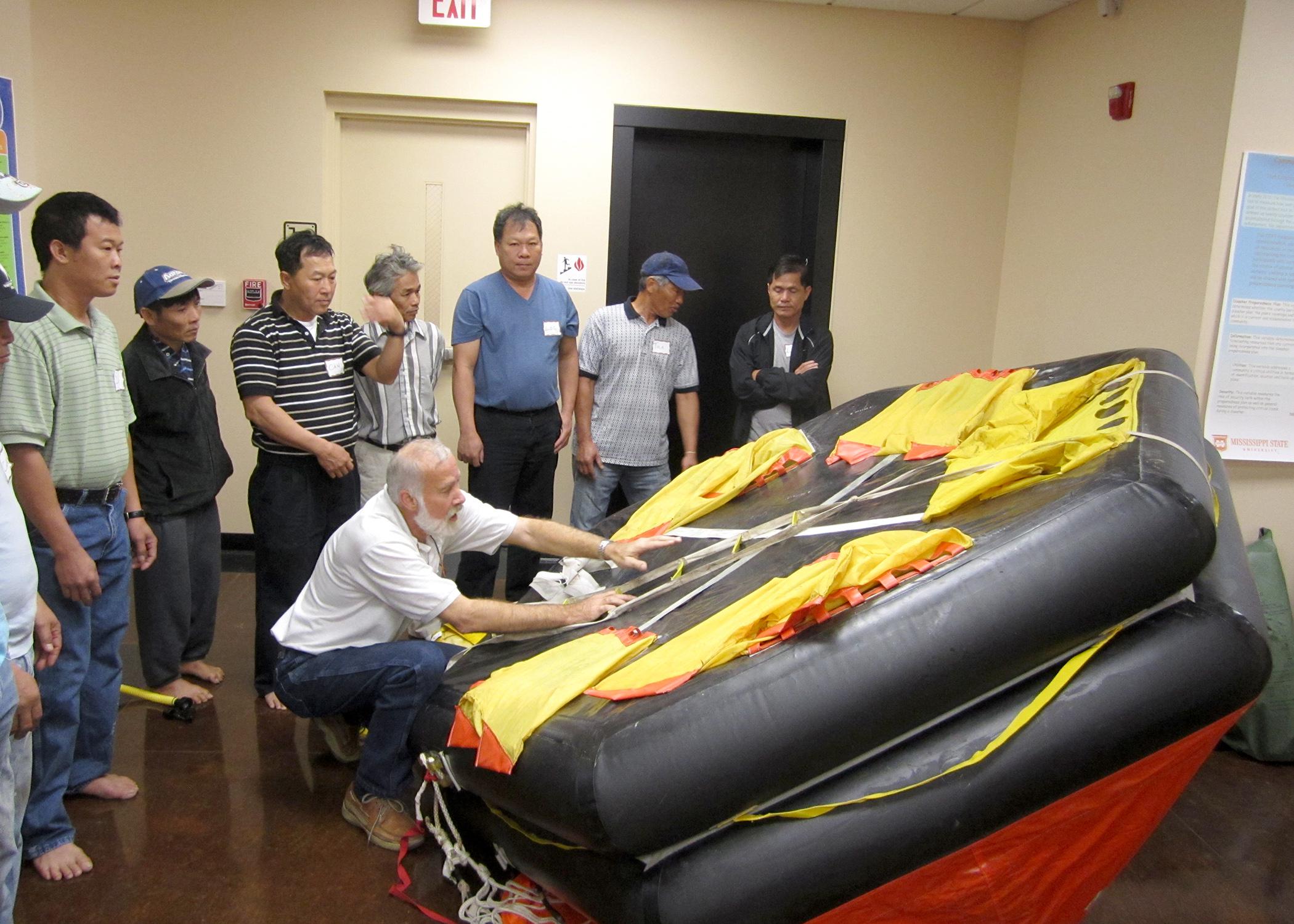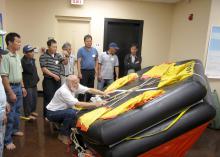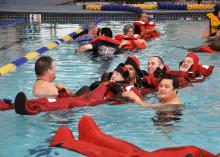Information Possibly Outdated
The information presented on this page was originally released on October 9, 2015. It may not be outdated, but please search our site for more current information. If you plan to quote or reference this information in a publication, please check with the Extension specialist or author before proceeding.
MSU boat safety training helps save two fishermen
BILOXI, Miss. -- The Atlantic hurricane that sunk the cargo ship El Faro in early October highlights the need for sailors to be trained in how to react in an emergency.
Dave Burrage, Mississippi State University Extension professor of marine resources at the Coastal Research and Extension Center, is trained to certify marine safety instructors who are sailors on commercial vessels. Two Mississippi sailors he trained survived an on-the-water collision that sunk one boat in the Gulf of Mexico last year.
“Two fishermen were involved in a collision at night, and one of the boats sank,” Burrage said. “They knew it was going to sink, but because we had trained them, they knew not to just jump in the life raft. They also knew to grab their ditch bag, which is prepacked with emergency items such as medicines, first-aid materials and the Emergency Position Indicating Radio Beacon.”
Burrage works with Extension project coordinator Peter Nguyen to provide the marine safety instructor training offered through the Alaska Marine Safety Education Association, or AMSEA. The U.S. Coast Guard requires that all commercial boats have at least one AMSEA license-holder on board.
“We offer a 12-hour course that leads to certification as a safety drill instructor,” Burrage said. “The course is hands-on, and we teach how to use the safety equipment a boat is required to have and such things as how to put out fires and fix leaks on boats.”
At the end of the training, instructors put the students through a series of scenarios to test their ability to perform the safety jobs required.
“We test them on firefighting, man overboard, helicopter evacuation, sinking and putting on a survival suit in less than 60 seconds,” Burrage said. “We also have them give out a radio mayday call. We give them 30 seconds to give the vessel name, nature of the problem, how many people are on board and the boat’s location.”
Part of the training is to prepare the safety drill instructor to assign everyone on board specific jobs to do in an emergency and then make sure they are prepared to do them.
“We like to tell them, when you’re out there fishing and you get ready to pick the nets up, you don’t tell your crew, ‘You do this and you do that.’ Everybody already knows what they’re going to do,” Burrage said. “This is the way we want them to be when it comes to a safety situation.”
In 2011, Burrage and Nguyen were certified to train marine safety instructors after completing the week-long AMSEA training program. They had to demonstrate their own nautical experience, and then they applied for and received U.S. Coast Guard certification.
They usually host one or two AMSEA classes a year in Mississippi and help out as guest instructors for one or two others in Alabama, Louisiana and the Florida Panhandle. They have trained about 200 sailors to date.
“The whole thought behind this process is, if you have an emergency at sea, that is not the time to be wondering who needs to do what,” he said. “You need to have a plan in place ahead of time so that everybody knows what their role is in the emergency response.”
Tricia Knight, head of the MSU Coastal Research and Extension Center in Biloxi, said this training meets a very practical need. Because of its close proximity to the state’s commercial fishing industry, the MSU center in Biloxi can address the needs of those clients.
“Commercial fishing is an incredibly dangerous industry. Because they are often far away from any land-based help, it’s important that they have as much training as possible to help them survive any kind of problem at sea,” Knight said. “Because of his knowledge of our commercial industry and his role with the Mississippi-Alabama Sea-Grant Consortium, Dave Burrage identified this training as a need and put the pieces in place to make it happen.”






